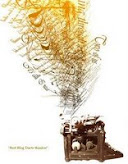In the 1700s people began creating pop-up books for kids.
One company, Dean & Son, made about 50 titles between 1860 and 1900. Each element of the scene was attached to the one in front of it with a piece of ribbon. When the ribbon was pulled, the whole scene popped up.
Because pop-up books are so complex, each book must be put together by hand. This was true in the 1800s and it is still true today.
Lothar Meggendorfer created some of the most complicated and original pop-up books of the 1800s. It wasn’t enough for one scene to pop-up on each page; Meggendorfer often had half a dozen parts of a scene moving at once and in different directions. Below is an example of a Meggendorfer pop-up.
 The first pop-up book that resembled the books we’re used to was created in 1929 by S. Louis Giraud. The illustrations in the book popped up automatically when the reader opened the book rather than when the reader pulled a string or tab. Pop-up books continued to be popular as a growing number of talented artists created unique books. An example of a pop-up by Giraud is shown below.
The first pop-up book that resembled the books we’re used to was created in 1929 by S. Louis Giraud. The illustrations in the book popped up automatically when the reader opened the book rather than when the reader pulled a string or tab. Pop-up books continued to be popular as a growing number of talented artists created unique books. An example of a pop-up by Giraud is shown below. Check out this gallery of pop-up books through the years, put together by Rutgers University.
Check out this gallery of pop-up books through the years, put together by Rutgers University.Come back tomorrow to make your own simple pumpkin pop-up card.
Return to main page.








No comments:
Post a Comment